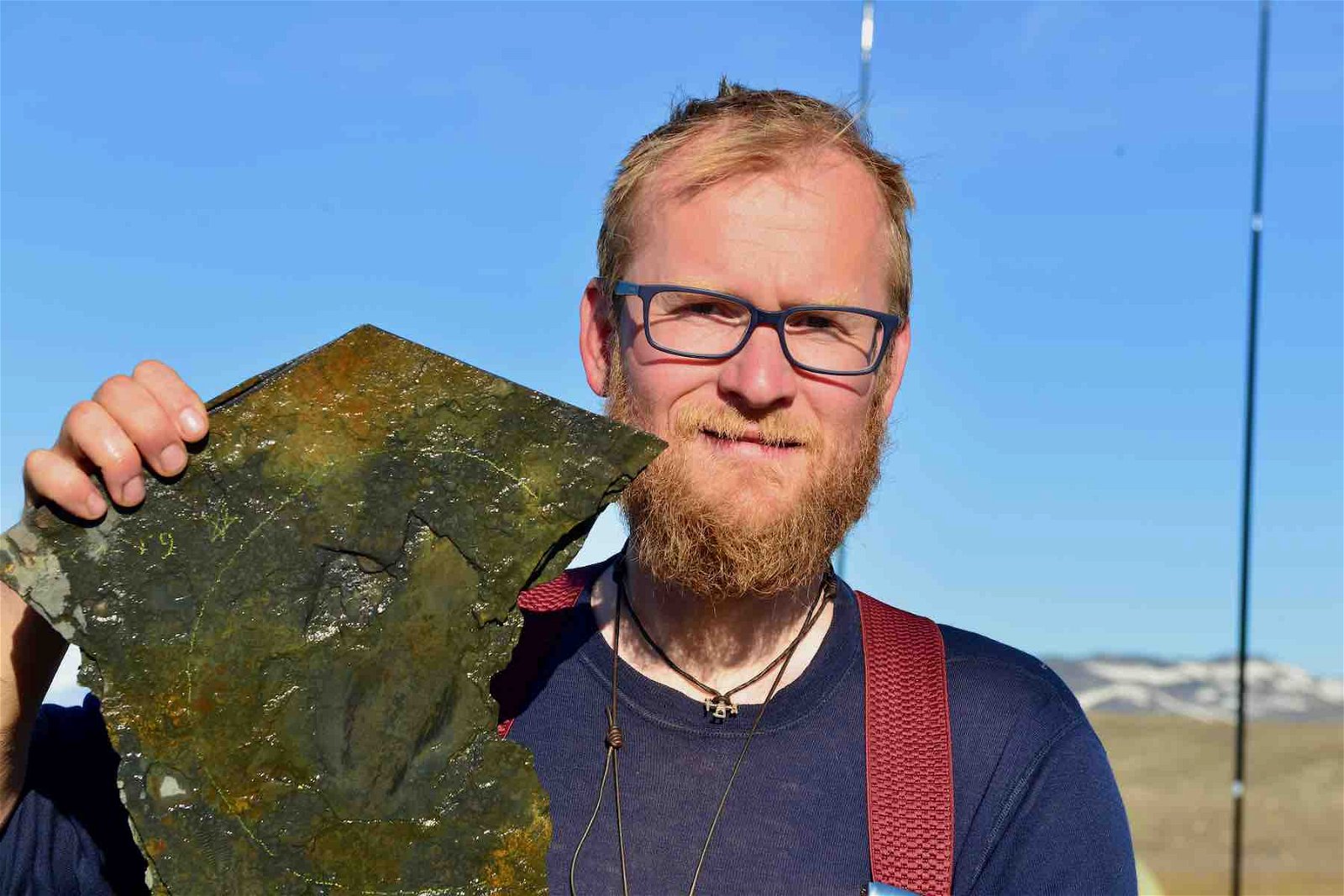Scientists have discovered a new variety of animal predators, whose ancient remains were recently unearthed during expeditions to a remote North Greenland high-Arctic zone fossil site.
Uncovered during a series of expeditions to the Early Cambrian Sirius Passet fossil locality in Peary Land, Greenland, the creatures represent a gigantic variety of worms that are now believed to be some of the earliest carnivorous animals.


Grouping in colonies in the region’s water column more than half a billion years ago, the monstrous creatures, which have been named Timorebestia meaning “terror beasts,” were previously unknown.
Living up to their names, the odd creatures looked like the very stuff of nightmares, possessing fins running the length of their bodies, antennae protruding from their heads, which were fitted with imposing jaws, making them one of the largest—and likely the most frightening—predators that swam Earth’s oceans during the Early Cambrian period.
Dr. Jakob Vinther, a researcher with the University of Bristol’s Schools of Earth Sciences and Biological Sciences, says that it was previously known that primitive arthropods like Timorebestia were among the dominant predators of their day. However, most of these extinct creatures were quite unlike modern species, which isn’t necessarily the case with the giant worms he and his colleagues have discovered.


“Timorebestia is a distant, but close, relative of living arrow worms,” Vinther, the lead author of a new study detailing the discovery, said in a statement. Among the oldest animal fossils from the Cambrian, arrow worms are part of a phylum of marine invertebrates that still exist today called chaetognaths, which are similar, but much smaller than their ancient predatory ancestors.
However, arrow worms do possess the same carnivorous proclivities as their forebears, feasting on tiny zooplankton as their main source of food.
“Both arrow worms, and the more primitive Timorebestia, were swimming predators. We can therefore surmise that in all likelihood they were the predators that dominated the oceans before arthropods took off,” Vinther says. “Perhaps they had a dynasty of about 10-15 million years before they got superseded by other, and more successful, groups.”
At just 30 centimeters, Timorebestia may not sound like much of a giant, especially compared with much larger life forms that would populate the planet within the ensuing millions of years since they were one of the most feared organisms in Earth’s oceans. At that time, however, the creatures would have been almost unrivaled.
“Timorebestia were giants of their day and would have been close to the top of the food chain,” Vinther said in a statement. “That makes it equivalent in importance to some of the top carnivores in modern oceans, such as sharks and seals back in the Cambrian period.”
Fossils have also revealed what Timorebestia fed on, with the discovery of the remains of Isoxys, a common variety of swimming arthropod, within the digestive systems of the giant worms.
“We can see these arthropods [were] a food source [for] many other animals,” according to Morten Lunde Nielsen, who also participated in the study, who added that “Timorebestia munched on them in great quantities.”
Tae Yoon Park with the Korean Polar Research Institute, a senior author of the team’s recent study and a field expedition leader to the high-Arctic fossil site, said their discovery offers definitive insights into the evolution of arrow worms.
“Living arrow worms have a distinct nervous centre on their belly, called a ventral ganglion,” Dr. Park says, calling it “entirely unique to these animals.”
Remarkably, the same nerve structure was discovered on the half-billion-year-old fossils of Timorebestia retrieved from Sirius Passet.
“We have found this preserved in Timorebestia and another fossil called Amiskwia,” Dr. Park said in a statement.
“People have debated whether or not Amiskwia was closely related to arrow worms, as part of their evolutionary stem lineage. The preservation of these unique ventral ganglia gives us a great deal more confidence in this hypothesis,” he adds.
“We have many more exciting findings to share in the coming years that will help show how the earliest animal ecosystems looked like and evolved,” Park said.
The team’s paper, “A giant stem-group chaetognath,” was recently published in Science Advances.
Micah Hanks is the Editor-in-Chief and Co-Founder of The Debrief. He can be reached by email at micah@thedebrief.org. Follow his work at micahhanks.com and on X: @MicahHanks.

